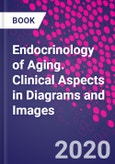According to the United Nations, the number of people aged 60 years or over in the world is projected to be 1.4 billion in 2030 and 2.1 billion in 2050. Endocrinologists and other clinicians face the challenge of caring for the elderly. To do so, they need to incorporate geriatric principles into their clinical practice. Endocrinology of Aging: Clinical Aspects in Diagrams and Images presents chapters in a way that allows the reader to incorporate concepts and main facts of complex subjects in a visual way. As the global population becomes older, the need for a deeper understanding of geriatric pathology increases, and with it, the access to educational resources for the endocrinology and metabolism of aging.
Please Note: This is an On Demand product, delivery may take up to 11 working days after payment has been received.
Table of Contents
1. Basic principles of aging with endocrine and nutritional implications. Aging and endocrine system 2. Physiology and hypothalamic-pituitary diseases in the elderly 3. Physiology and diseases of the parathyroid glands in the elderly 4. Vitamin D and calcium deficiency in the elderly 5. Senile and postmenopausal osteoporosis. Pathophysiology, diagnosis and treatment 6. Physiology and diseases of the thyroid gland in the elderly: Morphological and physiological changes. Hypothyroidism. Hyperthyroidism 7. Physiology and diseases of the thyroid gland in the elderly: Thyroid nodules. Simple goiter 8. Physiology and diseases of the thyroid gland in the elderly: Thyroid Cancer 9. Physiology and diseases of the adrenal glands in the elderly 10. Male hypogonadism in advance age: Physiology, etiology and diagnosis. Functional hypogonadism in the elderly 11. Male hypogonadism in advanced age: Therapeutic considerations. Gynecomastia in advanced age. Benign hypertrophy and prostatic cancer: Endocrinological aspects of development and treatment 12. Menopause as a manifestation of aging 13. Endocrine surgery in elderly patients 14. Metabolic and body composition changes with age 15. Obesity as accelerator of aging and functional decline: Epidemiology, causes, adverse effects, evaluation and treatment in the elderly 16. Relationships between frailty, sarcopenia and the endocrine-metabolic changes of advanced age 17. Diabetes mellitus in the elderly. Hyperglycemic hyperosmolar syndrome. Hyponatremia and dehidration 18. Diabetes mellitus type 1 and 2 as a risk factor of aging 19. Dyslipidemia in the elderly 20. Assessment of nutritional status in the elderly. Causes and management of malnutrition in the elderly








